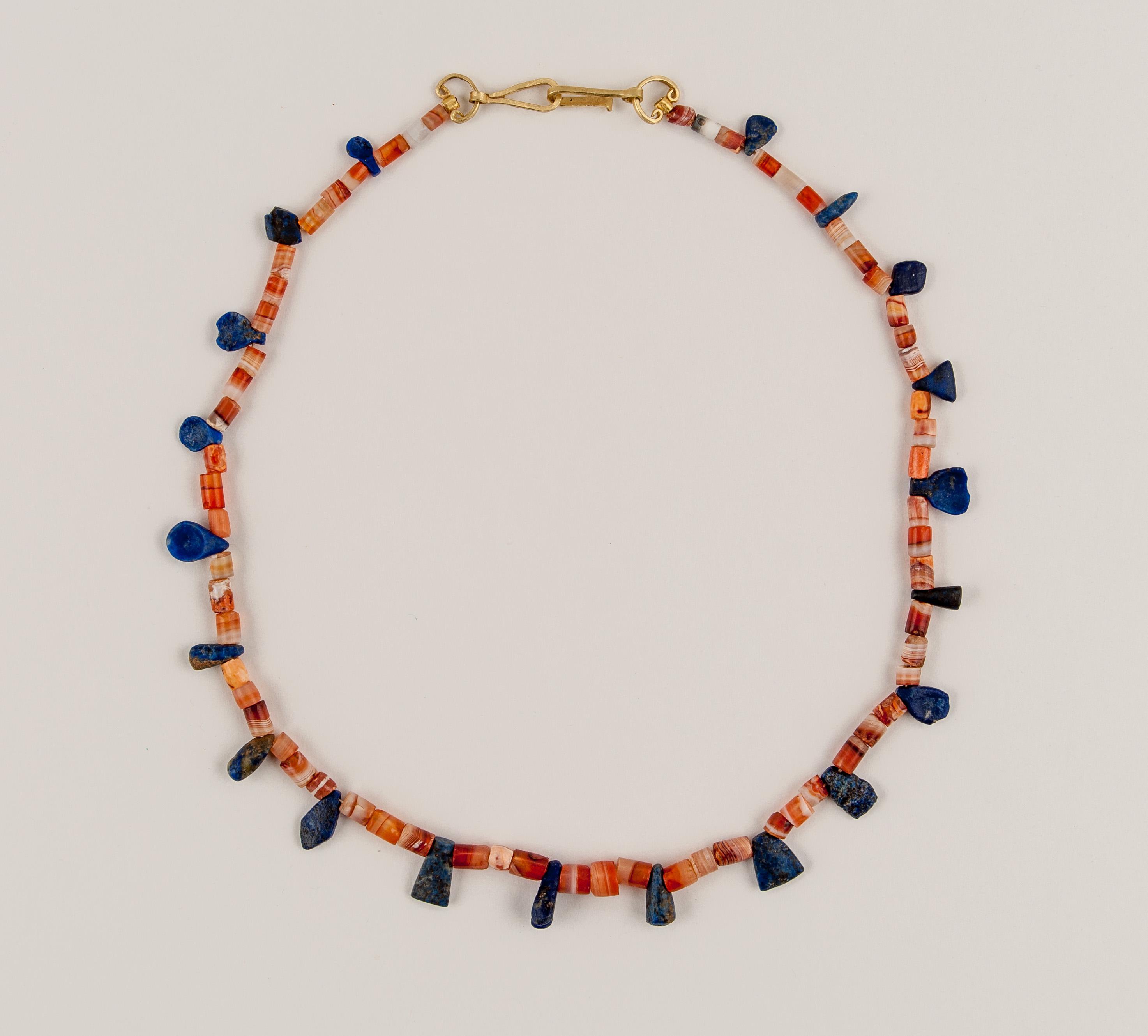Ancient Carnelian Beads with Lapis Pendant Beads of Various Shapes
Collection:
Swat Valley
Material:
Carnelian, Lapis Lazuli, 20k gold
Size:
The necklace is 16 inches (41 cm) in length. The necklace weighs 15.2 gm.
Price:
$2,350.00
A necklace of sixty-three cylindrical carnelian beads arranged in groups of three with twenty lapis lazuli pendant beads of various shapes, including, spoons, ax shapes, diamond, and tear drop. The handmade clasp is 20k gold. The carnelian beads graduate in size towards the back of the necklace. The largest beads are 6 mm in length, 4.5 mm in width and have drill holes of 1.5 mm. The smallest carnelian beads at the back are 4.5 mm in length and 3.2 mm in width. The lapis lazuli pendant beads are around 1 cm in height at the center and decrease to around 7 mm at the back. They are of various forms: at the back are eight spoon shaped pendants, there are four ax forms and four pointed forms that could be spear points, and four tear drop or inverted cone shapes. There is one pendant that is only 3.5 mm in width but has a thickness of 6.8 mm in contrast to the others which tend to be wider and not as thick as they are wide. This pendant has a notch filed in the bottom resulting in two asymmetrical lobes. Although the reference is not immediately clear to us, it would have been obvious to the people for whom it was made. There is a some slight damage to three of the pendants: two of the spoons have nicks in their edges and one of the diamond shaped pieces (spear point?) has its bottom point broken off. The pendants appear to be in the forms of protective amulets with symbolic meanings. The spears drive away evil, the axes are associated with a Mother Goddess, the spoons are used to make offerings, and so forth. The beads come from the Swat Valley in what is now northern Pakistan. Two thousand years ago it was a Buddhist kingdom known as Uddiyana. It included parts of what is now Afghanistan which is certainly where the lapis lazuli used in the pendants originated. Uddiyana was of considerable strategic and commercial importance in the ancient world. Its fertile valleys, warm climate, and above all, its central position on the busy trade routes between Asia and the Mediterranean made it valuable territory to control. As a consequence, it suffered numerous conquests, with each conqueror leaving an imprint on the culture; the result was a cosmopolitan, multi-ethnic society which is reflected in the many types and materials of the beads that are found there. The combination of lapis lazuli and carnelian was especially prized in ancient Mesopotamia. Beads were traded throughout the ancient world and many traditional cultures still wear beads, often having specific ensembles that are a marker of cultural identity. Beads were also a magical means of protection and the wearing of amulets was prevalent in all levels of society. Beads were not just a means of decoration, but were an important component in the spiritual connection to the gods and nature.
